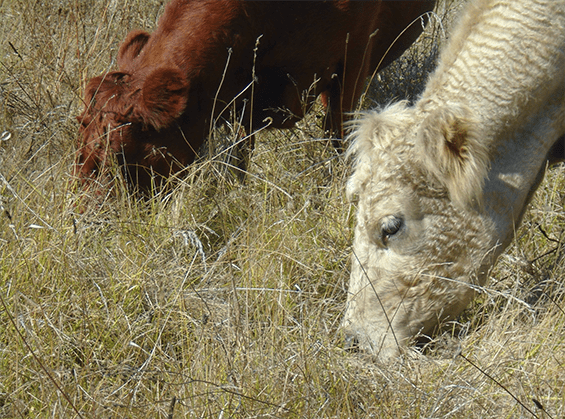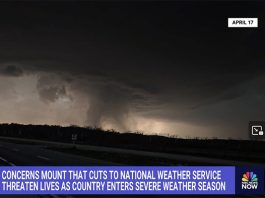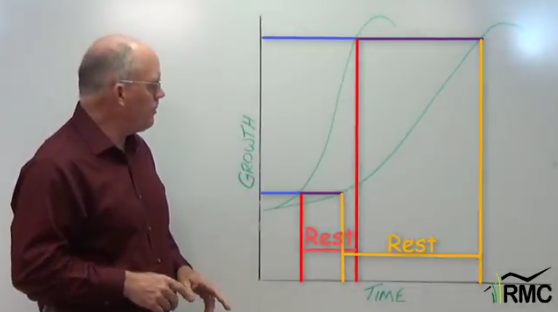
Whether it’s fair or not, people seem to believe that northwest corner of America is a fairly unique place. Folks like to rave about the extraordinary degree of “greenness” in this country, while also whining and moaning about our soggy winters. I always find this entertaining. The truth is, we do have a long, gray winter. We also have pretty glorious spring and fall seasons too. But as a grazier, it is the summer months that present the most challenges.
Our permanent pastures begin waking up in late February, and typically we are ready to begin grazing in late March. What follows is like a multi-month chess game. I run around checking on grazing conditions on around 100 paddocks, constantly making decisions about what group of cattle needs to be moved to what paddock, when, and how long until they should be moving again. The grass grows very rapidly, calves are born, the cattle inventory changes quickly with animals coming and going. The alley way stays busy with cattle being processed, cattle arriving, cattle departing.
During this entire spring season, my underlying focus is on one thing: trying to keep the forage plants from getting to the reproductive stage. If I get the correct number of animals onto a paddock at the proper time and leave them there for the correct graze period, the sward will be reduced and the maturity of the grass will be retarded. In the spring, when the grass is growing fast, rotation of the cattle must be rapid. Pretty exciting times for a grazing manager.

Toward the end of spring, our temperatures begin to rise and the amount of rain gradually declines. Eventually, (and usually this is around the tenth of June), we will reach a point where the soil has dried up and the grass simply stops growing. Oh, sure, some of the older, deep-rooted perennials grasses will continue to put on a bit of new growth, but as a whole, growth is finished. Annual plants turn brown and die. Happily, the leaves of the perennial grasses go dormant but remain green. This is the first day of summer grazing, and like a switch being flipped, my grazing program takes on a completely different look. For the remainder of the grazing season, (3-6 months), I will switch completely from trying to control the grass to trying to manage the diet of the cattle.

At this point, I can walk the paddocks and make a few notes, do a bit of rough math, think about current animal populations and marketing plans, and basically figure out how many days of cow food remain and what its quality is.
In a perfect world, on the day our pastures run out of soil moisture I would have a huge stockpile of bright green, dry grass – mostly re-growth. This quality of feed might not be quite good enough for yearlings to graze on, but it would be great for cow-calf pairs. However, if I was unable to keep up with the spring grass growth and keep the grass under control, I might be looking at a sea of grass that is part green, part yellow, part brown and even some gray.

Assuming I am running cow-calf pairs, I now get to determine just how hard I want to push the animals. I need to be conscious of the fact that the more I insist that the cattle utilize the forage, the lower animal performance will be. If I push the animals too hard, I’ll get more days of feed, but the cow’s body condition will suffer and the calves daily gain will decline also. The analysis, then, is not so simple: I need to know what my goals are. But in the end, the manager is in control of how much residual grass gets left on each paddock, how frequently the cattle move, what percentage of grass in removed, and ultimately, what the rate of gain (or loss!) is.
Strip Grazing on Dormant Grass
Strip Grazing is a particular method of managed grazing. In strip grazing we lay out a temporary fence each day (or whatever period you choose), let the cattle graze that strip of feed down, then open up another strip. In dormant season strip grazing, it is not necessary to use a “back fence”, and typically the cattle are allowed to walk back across the previous day’s strip to get to the water source. This works fine, as there is no re-growth. Therefore, there is no over-grazing – no “second bite”. Cattle simply move to the new strip and graze, beginning with the most nutritious and palatable feed they can find.
 As the grazing period goes on, the cattle will begin to eat the somewhat less desirable grass, then the really poor quality grass. The manager decides how long to leave the cattle in a strip before giving them a fresh strip. The longer the graze period, the lower the quality of the diet and the lower the animal performance. All of these outcomes and decisions depend upon the volume and quality of the feed and the number and class of animals you are trying to feed. And, of course, the results you are trying to achieve.
As the grazing period goes on, the cattle will begin to eat the somewhat less desirable grass, then the really poor quality grass. The manager decides how long to leave the cattle in a strip before giving them a fresh strip. The longer the graze period, the lower the quality of the diet and the lower the animal performance. All of these outcomes and decisions depend upon the volume and quality of the feed and the number and class of animals you are trying to feed. And, of course, the results you are trying to achieve.
In the end, the manager has to constantly make observations of the grass and the animals, and those observations should drive the decision-making process. And of course, those decisions are highly influenced by what the goals are. The cattle always have the same goal: eat the best feed immediately. The grazier may have vastly different goals: economic, ecological, aesthetic, etc.
There are a few helpful indicators that tell the manager what’s going on with the cattle and the grass, little things to watch for that tell us if the graze period is too short or too long. I know people like to talk about monitoring body condition as a way of knowing what’s happening. Frankly, in my experience, if you wait until your cow’s body condition is slipping, it’s difficult to get her back on the gain unless you wean the calf. Luckily, there are some other little things to watch for.
Grazing Behavior
Because we don’t use a “back fence”, cattle are free to wander back to the water source, grazing as they go. If you observe your cattle grazing in yesterday’s strip instead of today’s strip, this suggests that they have reduced today’s strip to the point where yesterday’s grass is more attractive. In this case, you might want to consider making tomorrow’s strip a bit larger, or shortening the graze period: move them faster. This depends somewhat on how happy you are with the appearance of yesterday’s strip.

Bitching and Moaning
Once cattle are indoctrinated into a managed grazing protocol, they pretty quickly figure out that if they act hungry, people will sometimes move them. You should try to avoid being influenced by bellowing and begging. Get off the four-wheeler and walk around the paddock for a while. I find that often, if I don’t pay much attention to them, they go back to grazing. While I’m wandering around, I try to make observations of the condition of the grass and the cattle. Often times, I leave without giving them a fresh strip. This kind of non-mathematical, non-emotional management takes some experience and will power.
Ruminating vs. Running Around
I always love to see cattle resting. Just laying around in the shade, chewing their cud. This behavior suggests to me that their tummies are full, and that’s good. What makes me nervous is when I check on cattle and find them constantly in motion, snipping small mouthfuls of grass while they pace. These cattle never get full. If they had adequate nutrition, both quality and quantity, they’d be laying down occasionally. These constantly moving animals are unlikely to be performing at a very high level, as their quality or quantity of feed is too low. This suggests you should be moving them more quickly, or giving them a larger daily ration.
Manure
What comes out the back end of a cow tells us a lot about what is going in the front end. Cattle grazing immature, super-high protein grass will have bright green, extremely liquid manure. Cattle on old, dead, dry, rank feed will produce manure that is brown or even yellow, manure pats that stand up taller than they are wide.
Here’s what your manure can tell you about your forage quality.
Manure Scoring – What Comes Out Tells You What Went In and What to Change
My dormant grass is somewhere in the middle of those extremes. Keeping an eye on the appearance of manure pats as I walk through yesterday’s strip gives me guidance about how large to make the strip tomorrow. Keep in mind that the cattle always eat the high quality grass first, then gradually eat lower and lower quality feed. For example, if I’m giving a fresh strip every 7 days, but I notice that on day five or six the fresh manure pats are getting taller and browner, well, I need to decide if animal performance is suffering, or if I’m satisfied.
It’s summer time, yes, but the management ain’t all that easy. It is kind of fun, though.
Happy Grazing!




You are spot on John! (In my humble opinion.) Your explanation of how critical spring grazing is to setting up dormant season grazing is probably the best description I have ever read. It is a point that often gets missed when it may be the most important piece to effective year round grazing. One point I would like to add, in my experience, not having a back fence allows animals to graze the thatch layer that is required to store moisture & protect the soil. Earlier this fall I toured a ranch that had large tracts of land with 2-3″ of thatch. There had not been any rain for three weeks and the daily temperature had been 30-34C (86-93F). When I dug down, the thatch was moist and I could make mud balls with the soil. In 20 years of grazing I had never seen anything like it! It certainly opened my eyes to what is possible. The one time I came close to this type of ground cover (bucking horses grazed 55ac of alfalfa in July-September), the cattle removed all the thatch in November/December because they had to walk through the paddock for water. The thatch could have been saved with an alley through the paddock.
John,
Really enjoy the articles. I too live in western OR. Would love to meet you in person and see your operation. Maybe we can discuss you being a “mentor”. 😬🤠 Thanks!
Dennis
What about winter rye? On smaller pastures, seeding it in isn’t a challenge, and it thrives in cool weather and even with little rain. Gabe Brown, S. Dakota, seeds it in a cocktail on fields for a cover and grazes it all winter.
Comments are closed.